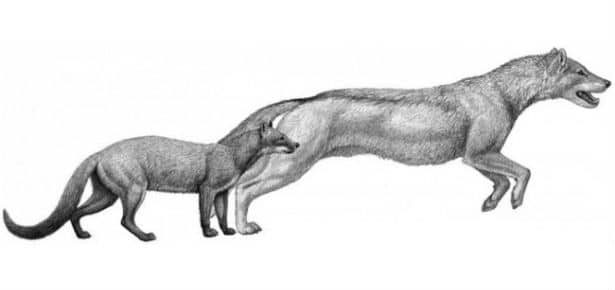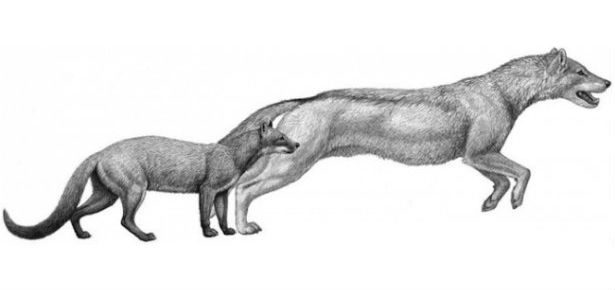

Climate Change May Have Caused Dogs To Evolve From Cat-Like Creatures Into Modern Wolves
New findings suggest ancient climate change's effect on the environment caused dogs to develop legs better suited for running than hunting.
New research suggests climate change over the past 40 million years has helped shape the dogs we see today.
The climate of North America is much cooler and drier than it was in ancient times, and a recent study reveals how canines evolved in response to their changing habitat, Brown University reported. A team of researchers looked at historical dog fossils and made observations that suggest predatory canines evolved as a direct result of the influence climate change had on their hunting opportunities.
"It's reinforcing the idea that predators may be as directly sensitive to climate and habitat as herbivores," said Christine Janis, professor of ecology and evolutionary biology at Brown University. "Although this seems logical, it hadn't been demonstrated before."
About 40 million years ago, North America is believed to have been warm with lush wooded areas. Canine ancestors that walked the Earth during this period looked more like mongooses than modern dogs, and had forelimbs that were better suited for climbing than running. A few million years later, the climate began to cool significantly, causing much of the forest to transform into open grasslands.
To determine if these environmental changes influenced the evolution of local carnivores, a team of researchers looked at elbows and teeth of 32 species of dogs spanning the period from 40 million years ago to 2 million years ago. The found that at the same time the climate was cooling, dogs were evolving from "ambushers to pursuit-pounce predators" similar to modern coyotes and foxes. Some went on to evolve into high-stamina hunters, such as modern day wolves.
"The elbow is a really good proxy for what carnivores are doing with their forelimbs, which tells their entire locomotion repertoire," Janis said.
Older canine species tended to have paws that could swivel inwards or down to help them grab and wrestle prey, a similar structure can still be seen in the limbs of modern cats. As the animals evolved, always downward-facing limbs became more common to aid in their running ability. Dogs also began to develop larger teeth as their transformation took place.
The findings suggest evolution is not just an "arms race" between predator and prey, but is a reaction to many complicated environmental factors. The researchers believe their findings also have implications for the future effects of current man-made climate change on evolution.
"Now we're looking into the future at anthropogenic changes," Janis concluded.
The findings were published in a recent edition of the journal Nature Communications.
Join the newsletter and never miss out on dog content again!
"*" indicates required fields
By clicking the arrow, you agree to our web Terms of Use and Privacy & Cookie Policy. Easy unsubscribe links are provided in every email.





